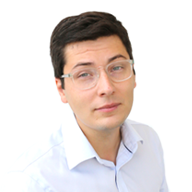Extreme Nanophotonic Engineering
This webinar is hosted By: Nanophotonics Technical Group
04 October 2024 14:00 - 15:00
Eastern Daylight/Summer Time (US & Canada) (UTC -04:00)
Naturally abundant materials, such as silicon, metals, and van der Waals (vdW) materials, exhibit excellent optical properties that find use in classical and quantum photonic integrated circuits. By molding these materials under extreme conditions—such as high pressure, strain, and intense light fields—we unlock vast possibilities for engineering photonic properties on demand.
Thermomechanical processing under carefully chosen pressures and temperatures enables the manipulation of the electronic bandgap of 1D vdW materials at record-high rates and modulation of the phonon-polariton dispersion by more than 10%. Subjecting resonant nanostructures to ultrastrong laser fields, one can achieve deep-subwavelength nanomachining that surpasses the diffraction limit by 80x and enables single-pulse probing of free-standing metasurfaces and light-matter interactions beyond the time-bandwidth limit.
Finally, we will show that bright single-photon sources can be enabled through tailored nanophotonic resonators and atomic-level design. Extreme-engineered materials open an exciting avenue for nanophotonics, enabling new modalities for devices with on-demand optoelectronic properties for telecommunication and quantum information systems.
About Our Presenter: Maxim Shcherbakov, University of California, Irvine
 Dr. Maxim Shcherbakov is an assistant professor at the Department of Electrical Engineering and Computer Science and Materials Science and Engineering at the University of California, Irvine. Dr. Shcherbakov received his Ph.D. from Lomonosov Moscow State University, Russia (2012) and was a project leader at Samsung Advanced Institute of Technology until 2016. He joined the Applied and Engineering Physics Department at Cornell University as a postdoctoral fellow from 2016 to 2021. Since 2021, he has been the head of the Shcherbakov Nanophotonics Lab at UC Irvine, which innovates in photonic materials and devices in classical and quantum domains. He has authored over 60 research papers, patents, and book chapters. He has received several prestigious awards, including the DARPA Young Faculty Award (2022), the NSF CAREER Award (2024), and the DARPA Director’s Award (2024).
Dr. Maxim Shcherbakov is an assistant professor at the Department of Electrical Engineering and Computer Science and Materials Science and Engineering at the University of California, Irvine. Dr. Shcherbakov received his Ph.D. from Lomonosov Moscow State University, Russia (2012) and was a project leader at Samsung Advanced Institute of Technology until 2016. He joined the Applied and Engineering Physics Department at Cornell University as a postdoctoral fellow from 2016 to 2021. Since 2021, he has been the head of the Shcherbakov Nanophotonics Lab at UC Irvine, which innovates in photonic materials and devices in classical and quantum domains. He has authored over 60 research papers, patents, and book chapters. He has received several prestigious awards, including the DARPA Young Faculty Award (2022), the NSF CAREER Award (2024), and the DARPA Director’s Award (2024).
[1] N. Hussain, S. Ahmed, H. U. Tep, K. Ullah, K. Shahzad, H. Wu, M. R. Shcherbakov, “Giant Thermomechanical Bandgap Modulation in Quasi-2D Tellurium,” Advanced Functional Materials, 2407812 (2024).
[2] N. Hussain, M. A. Sakib, Z. Li, W. Harris, S. Ahmed, R. Wu, H. K. Wickramasinghe, M. R. Shcherbakov, “Vacancy-Engineered Phonon Polaritons in α-MoO3,” arXiv:2309.05574 (2023).
[3] M. R. Shcherbakov, G. Sartorello, S. Zhang, J. Bocanegra, M. Bosch, M. Tripepi, N. Talisa, A. AlShafey, J. Smith, S. Londo, F. Légaré, E. Chowdhury, G. Shvets, “Nanoscale Reshaping of Resonant Dielectric Microstructures by Light-Driven Explosions,” Nature Communications 14, 6688 (2023).
[4] G.Satrorello, J. Bocanegra, D. Knez, D. M. Lukin, J. Yang, J. Vučković, D. Fishman, G. Shvets, M. R. Shcherbakov, “Nonlinear Mid-infrared Meta-membranes,” Nanophotonics 13, 3395 (2024).
[5] P. A. Shafirin, V. V. Zubyuk, A. A. Fedyanin, M. R. Shcherbakov,* “Nonlinear Response of Q-Boosting Metasurfaces beyond the Time-Bandwidth Limit,” Nanophotonics 11, 4053–4061 (2022).
[6] M. A. Sakib, B. Triplett, W. Harris, N. Hussain, A. Senichev, M. Momenzadeh, J. Bocanegra, R. Wu, A. Boltasseva, V. M. Shalaev, M. R. Shcherbakov, “Site-Controlled Purcell-Induced Bright Single Photon Emitters in Hexagonal Boron Nitride,” Nano Letters ASAP doi.org/10.1021/acs.nanolett.4c02581 (2024).
